Hey friends, it’s countdown to baby time over here, but I really wanted to get this post up before things get too crunched! It’s fun to look back on the year and see how much things have grown and changed in our homeschooling life. And how different our homeschool space looks now!
Wrapping up a major renovation (you can see that here), homeschooling two, and preparing for our fourth child has caused me to embrace minimalism in our schooling even more!
Last year I was fighting a strong instinct to throw away my lists and plans and lean into my unschooling side. I have done that more this year and it’s been right for us. My planning ends up leaning heavily on daily routines and an intentional environment. I do have one list, which is a running list of book titles I want to read to my kids!
Our Minimalist Approach
My main goal for the early years of homeschool is really simple: create a home environment that is conducive to organic learning. (That of course includes helping them build skills in reading, writing and math!) Our long-term goal is to eventually have our girls disciplined enough to self-educate on whatever interests them. The majority of the planning I do is researching good books, making sure we have materials for creative projects on hand, and coordinating our schedule to keep the necessary margin in our day for learning.

We are pretty light on things like toys, printables, and extra learning materials. I find it too overwhelming. Too many materials seem to only serve as a reminder of what all we are not doing. I really just love our simple routine of morning basket and table work. My girls like having the time to organize their own hands-on activities, which they do naturally through their free play.
Morning Basket
We start our day with free play, breakfast and morning chores. Then we transition into school with our Morning Basket time at about 10:30. This cover the following subjects: science, history, geography, literature and Bible. I started doing this two years ago (you can read about that here) and it has grown along with us, just as I hoped it would!
Every morning Junie picks a picture book for us to start our reading time with. I use lists of recommended picture books from Read Aloud Revival (it’s probably our third time through her seasonal picture book list).
I get the majority of my book ideas for our morning basket from Sonlight, Ambleside Online, and Beautiful Feet book lists.
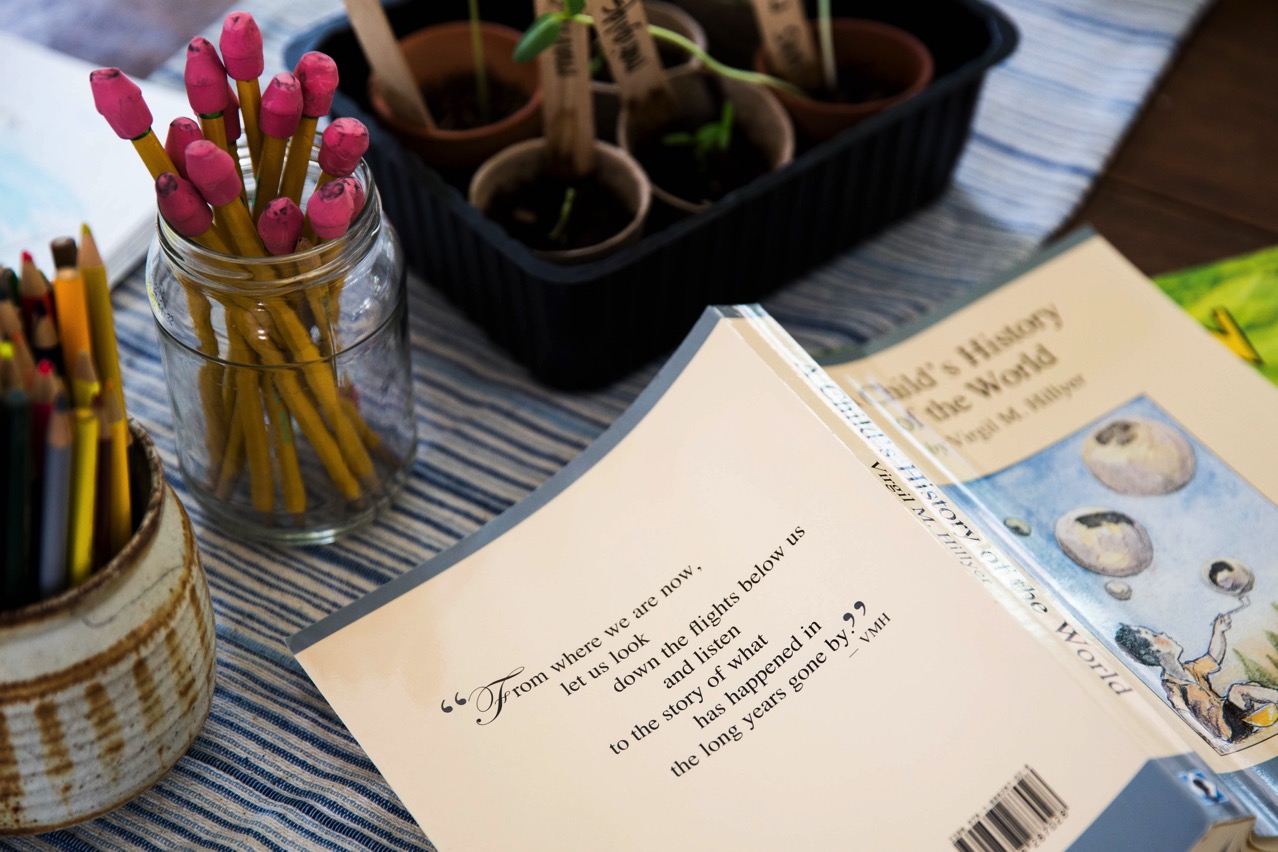
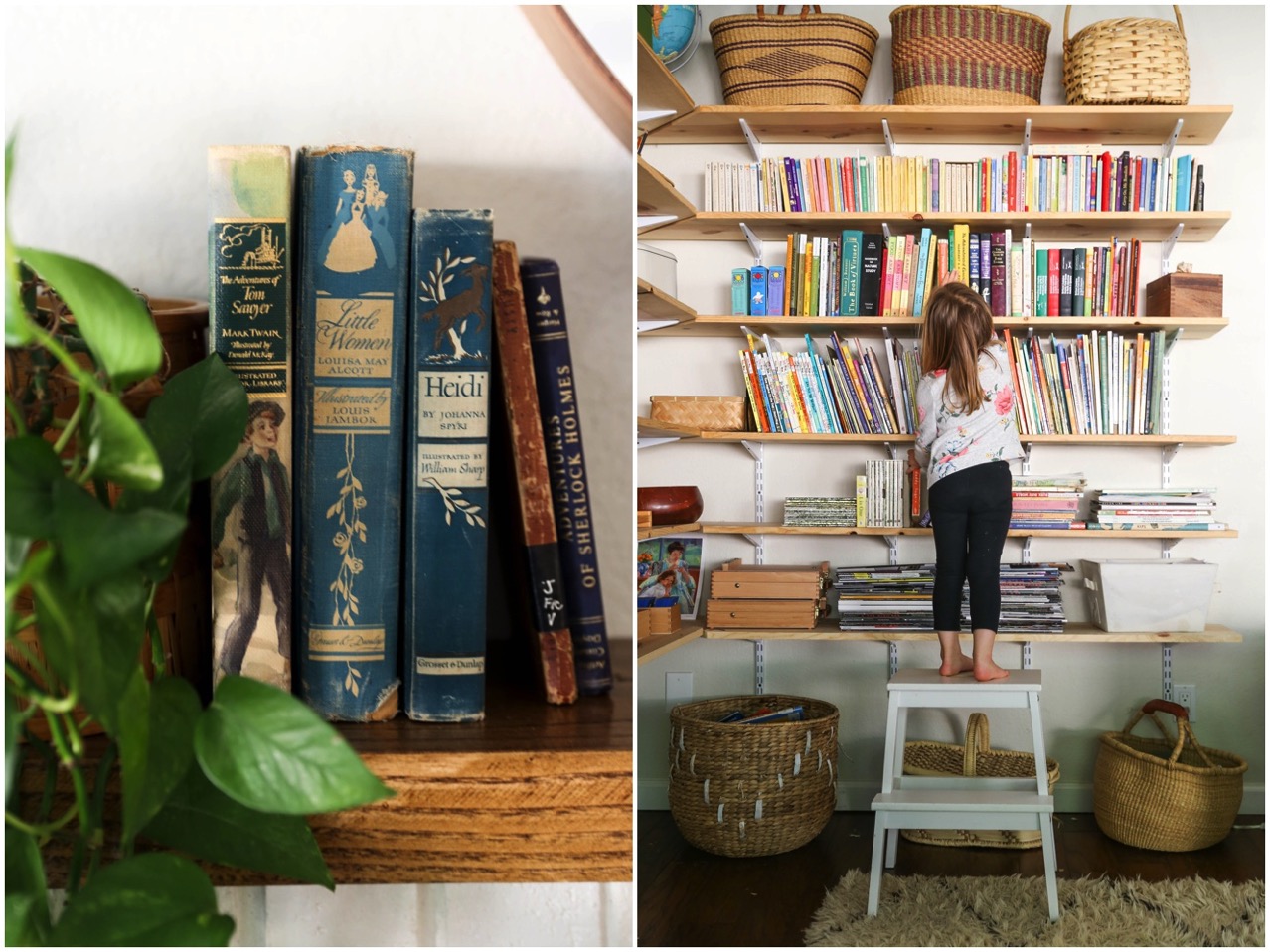
For Bible, we are working our way through the children’s devotional book Leading Little Ones to God. Once or twice a week we also read a story from Egermeier’s Bible Story Book. We found some some free printed scripture memory cards from Seeds Family worship (we printed the Faith pack) that we laminated and put in our basket.
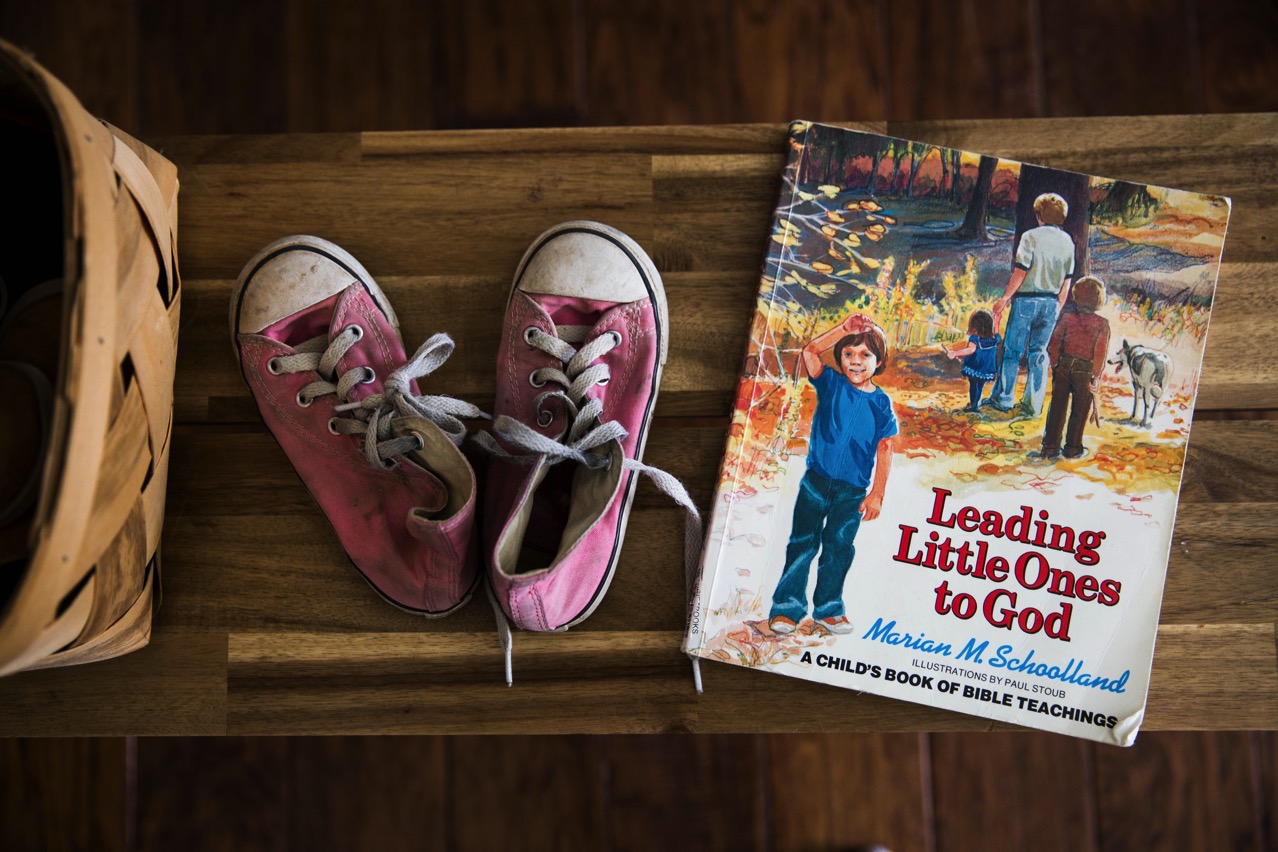
Table Work
After that, we move over to the table where we pull out the snacks and spend some time working on the skill building portion of our homeschool (phonics, math and writing). My three-year-old has a dry erase preschool workbook that she takes to her spot at the table. She sits at the table and mimics what we are doing with her markers and book by tracing letters and circling pictures. According to “school”, my two older girls are technically kindergarten and second grade, but that is kind of irrelevant here at home since I let them each go at their own pace.
Reading/Phonics
Reading to your children and providing a print-rich environment are the keys to learning to read. Reading aloud daily to my girls, keeping our home stocked with good books, and maintaining a low-stimulation lifestyle has caused them to take a natural interest in reading (some earlier than others, but that’s ok). We have been able to go easy on the formal curriculum and major on the act of reading.
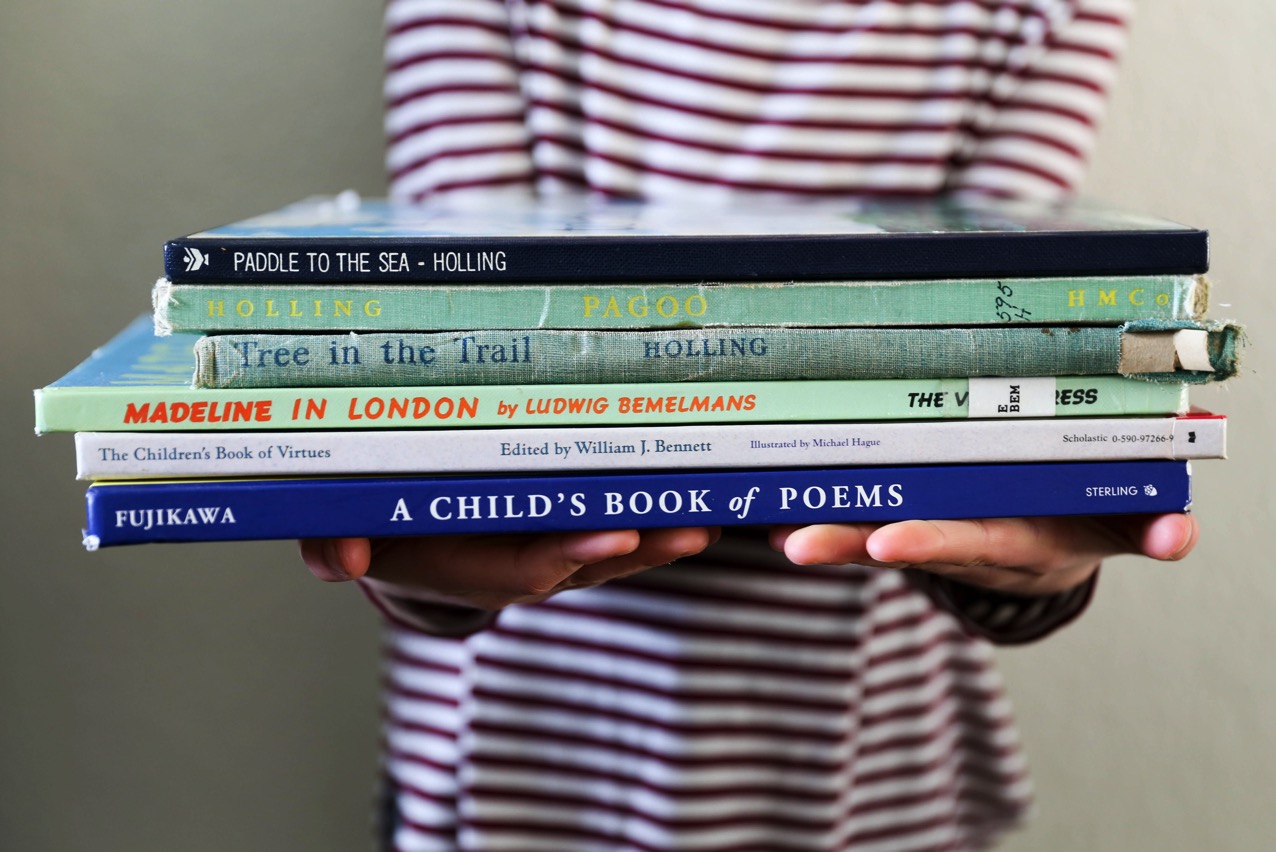
We do use Explode the Code phonics workbooks for practice. Due to differences in academic readiness, both girls are in same phonics workbooks together. I also have sight word and phonetics flash cards that they really enjoy doing together.
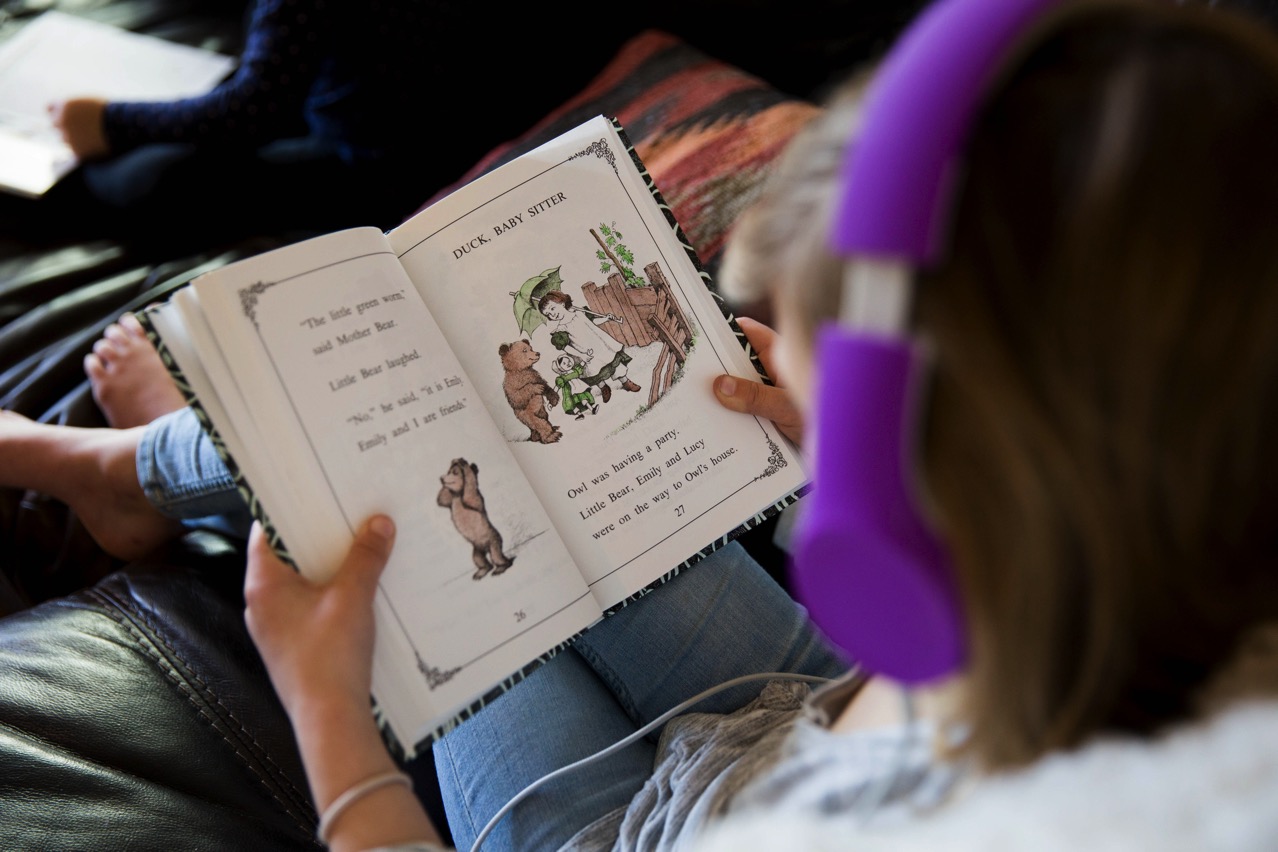
One great tip for getting them interested in reading on their own was to buy some good early readers on audio for them to listen to first. Once they got familiar with those stories, discovering the hard copy on our shelves was really exciting, especially for my kindergartener, who is reading everything in sight! Their favorite stories are all Arnold Lobel I Can Read Books! (This series is mentioned here in this list of children’s audio book recommendations!)
Math
Math is not something that comes naturally to me, so it has been one big, ongoing experiment over here! If you’ve been seeing my Instagram stories, you know! The short version of this is that we combined both girls on the same level of Math U See, and we love it.
Here’s the detailed version of that story for those who asked: Last year we used Right Start Math for first grade, which I really liked, especially the script provided in the teacher’s guide. There are lots of fun games and activities. This makes it very prep-heavy. With more to juggle, I needed something simpler.
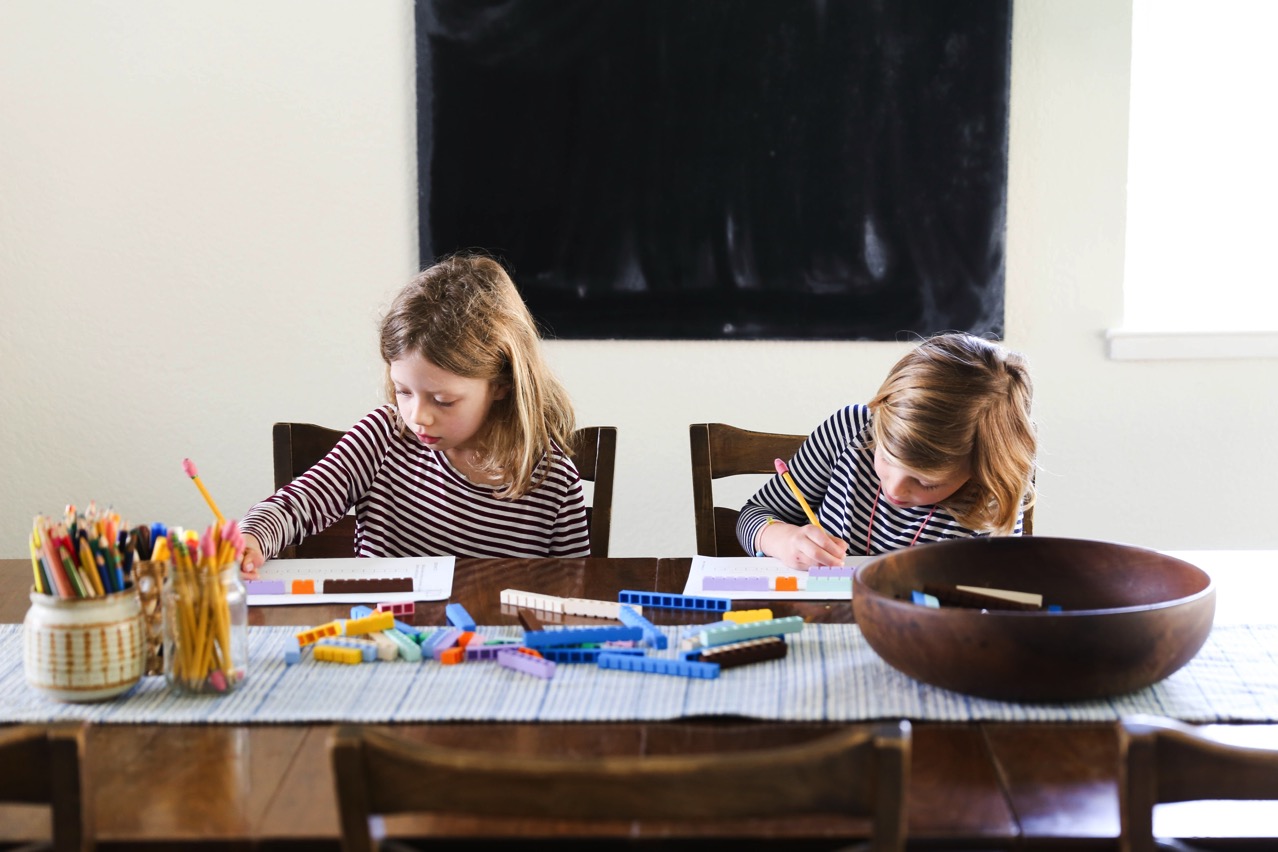
So this year I tried Math Mammoth workbooks for my second grader. It was not for us. I struggled to explain Math Things without a scripted teacher’s guide and my daughter missed the sensory involvement. When we began to work with the common core portion of the book, that was the nail in the coffin! The mixing of symbols and abstract mathematical concepts had my girl so confused, she couldn’t remember basic subtraction. Cue another round of math curriculum research!
I decided to back up and start both girls together on the Primer level of Math U See. Yes, this was a repeat for my second-grader, but she needed it. We totally switched math in like, March and used it for about a month! (Yes, you can do this! No, the universe did not implode!) It seems to be good middle ground It has a little bit of worksheet, a little bit of manipulative work, and of course, a script for me. Not to mention, video lessons with a teacher! He explains the concepts with clever illustrations and analogies, which I can then use.
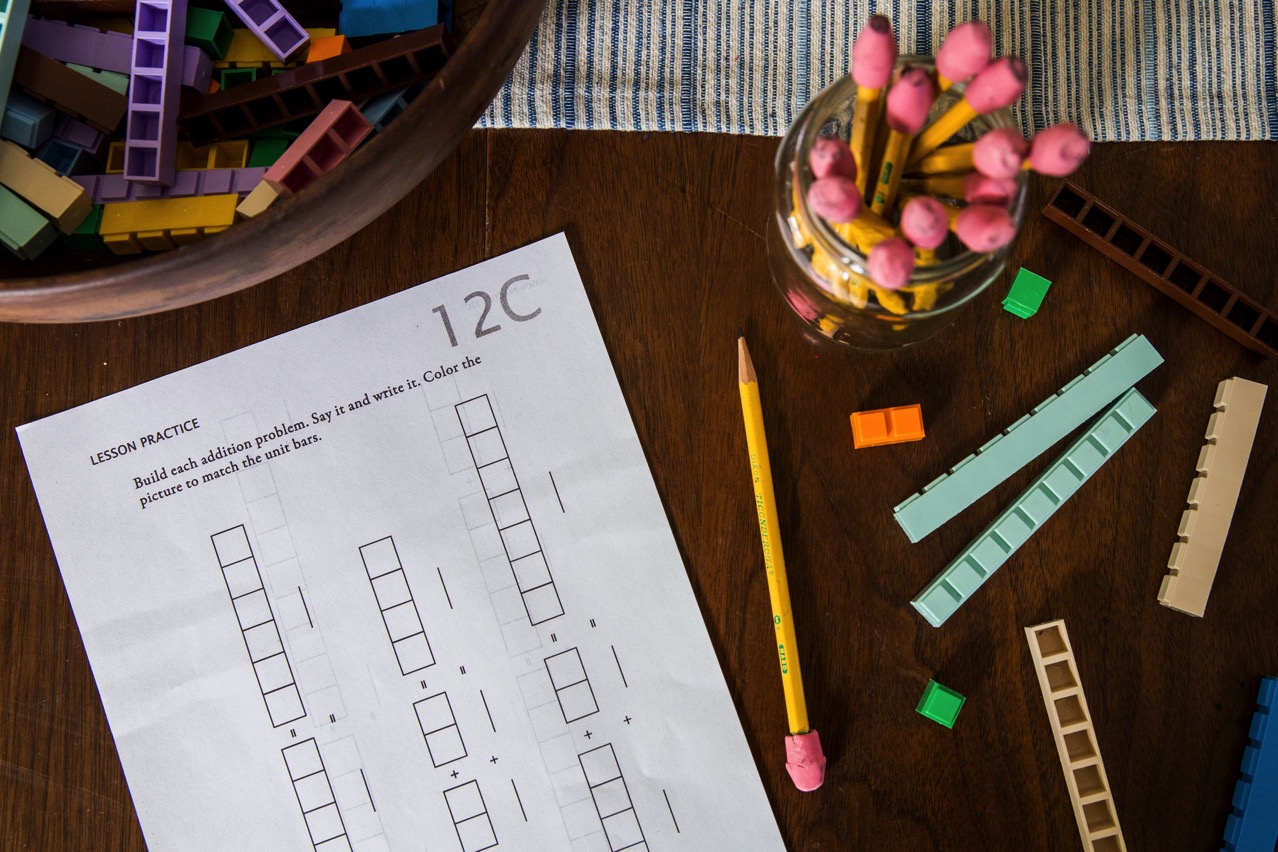
Writing/Handwriting
Our writing and handwriting is all done in the form of note booking. I love how multi-purpose this practice is! It covers writing, handwriting, and narration for all other subjects in one activity. My second-grader is required to write her own sentences, while my kindergartener simply copies hers.
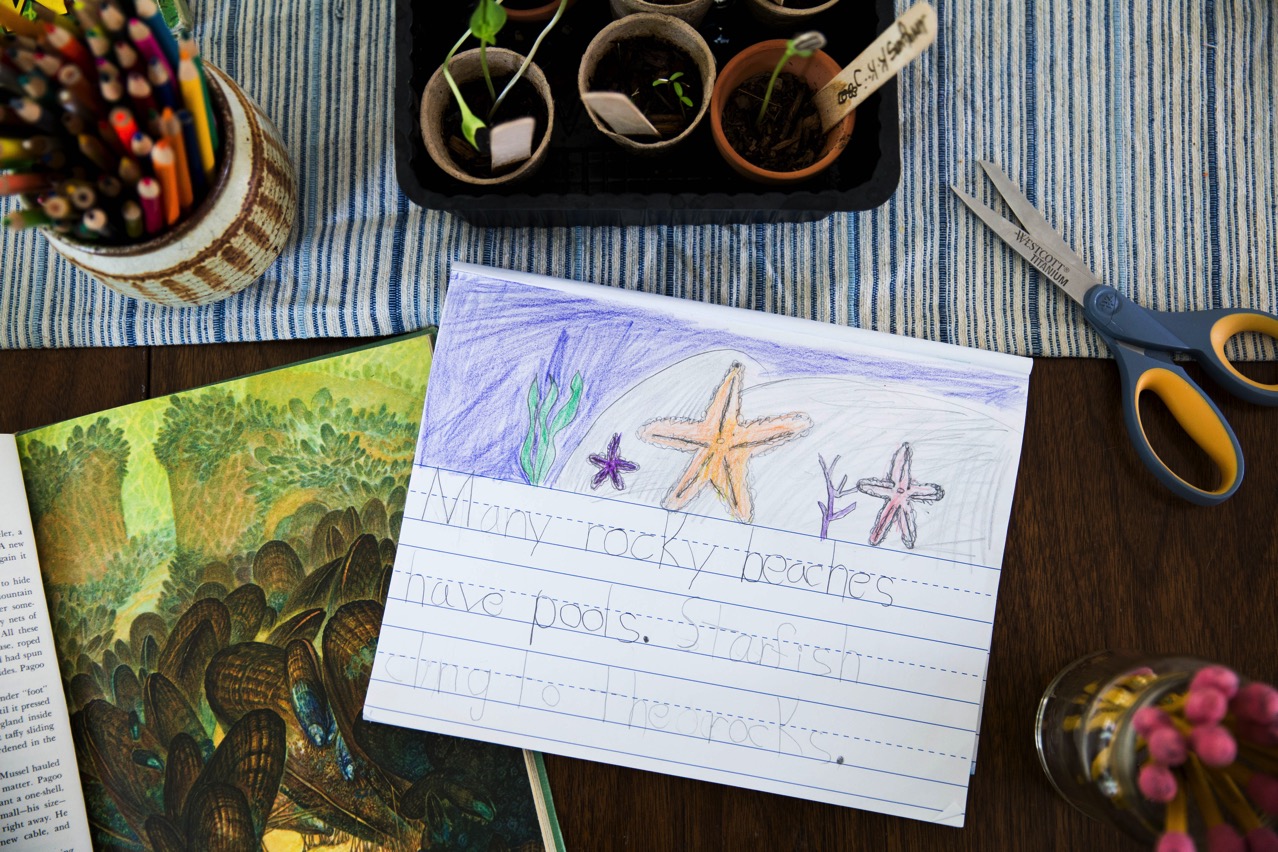
We have never used a formal handwriting curriculum because I feel like it’s redundant with this practice in place. Since I am right there next to them while they are writing, I can help them with correct letter formation on the spot. No need to add another thing our list.
Other Things
For additional science we use Kiwi Crates and participate in a nature group weekly!
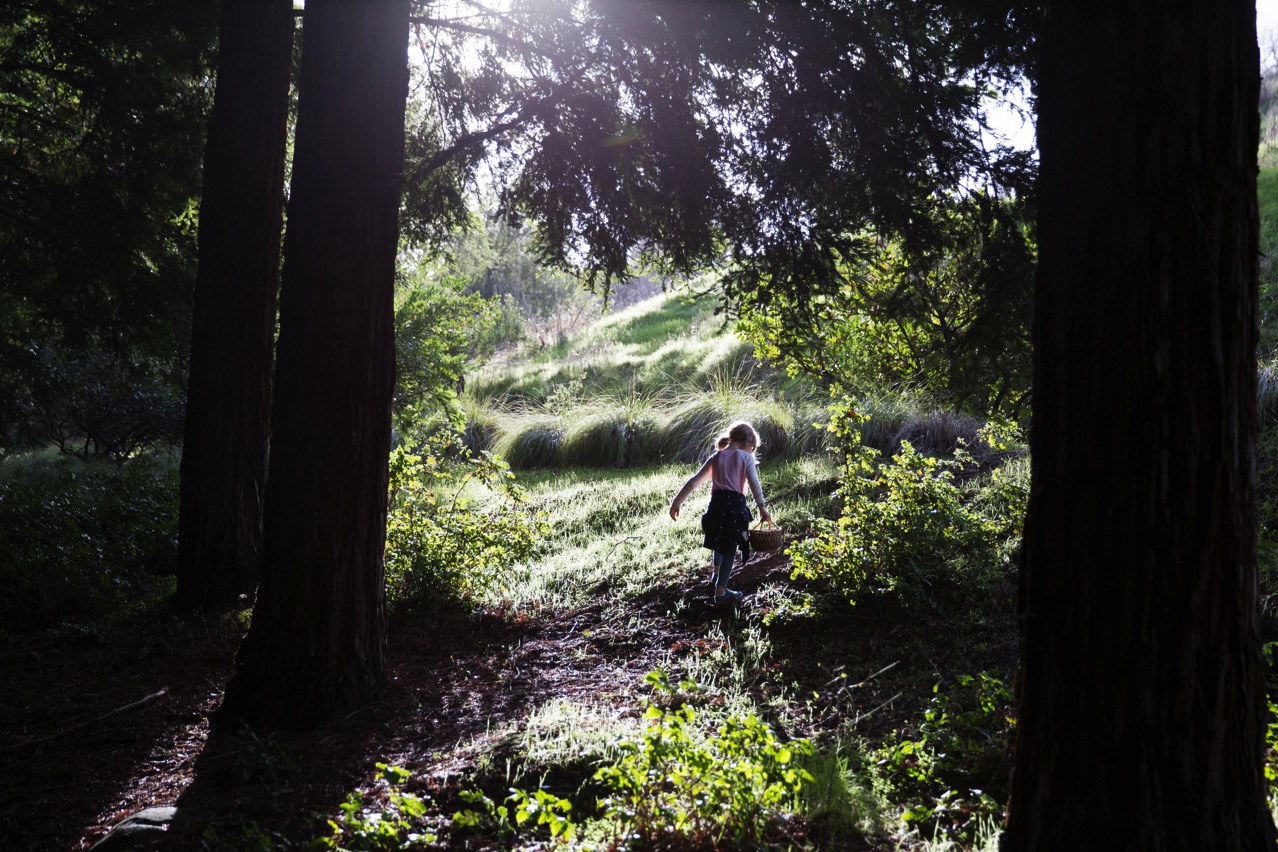
A Note About Afternoons
This year I made some changes after I came to realize that afternoons were a source of frustration. I feel the pressure to make afternoons “productive” with things like errands and play dates. Unfortunately, crammed afternoons always bleed into the next morning for me and usually school will be the first thing to suffer. It is still very hard to protect our afternoons, especially in a culture that really glorifies the “hustle,” but I am learning to value afternoons as necessary margin. Things we do in the afternoon: play, go to the library, bake, and attend gymnastics classes.
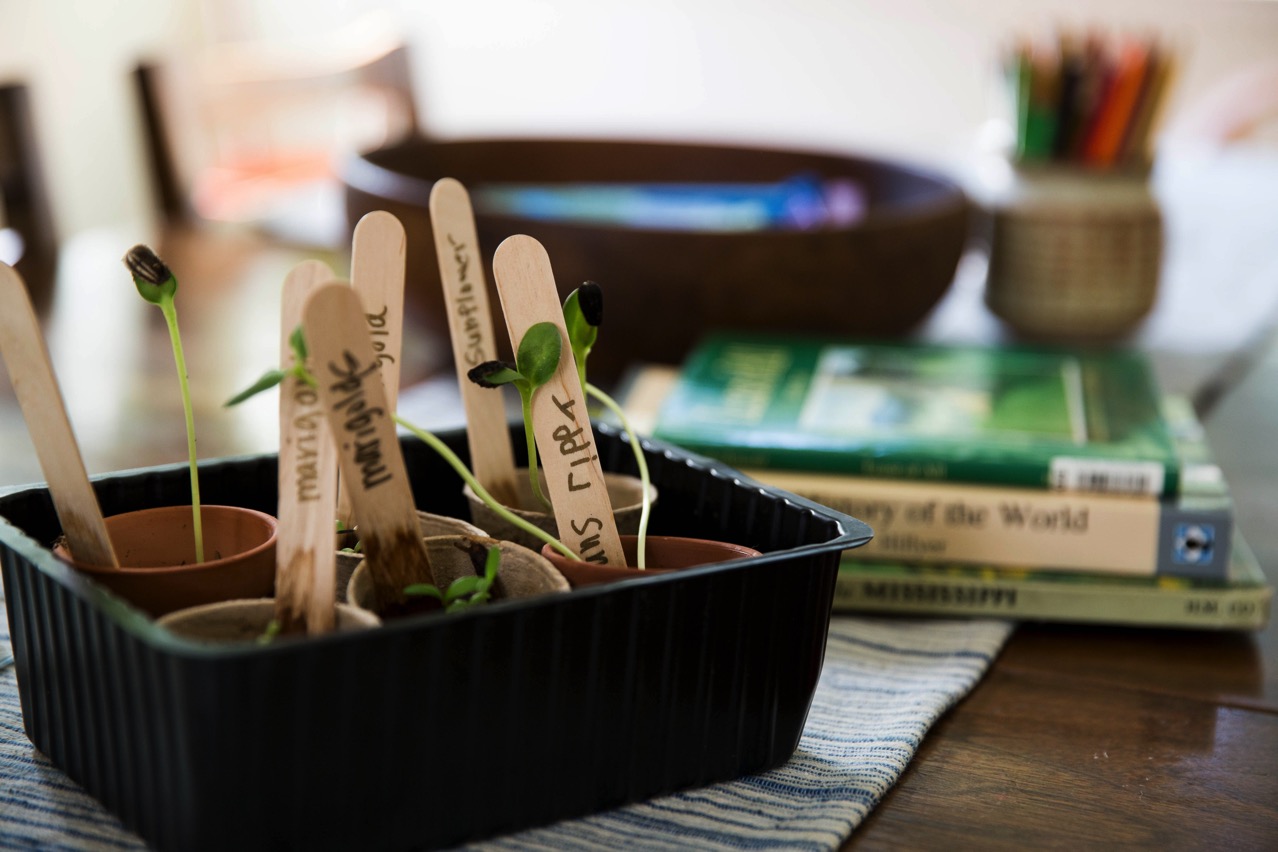
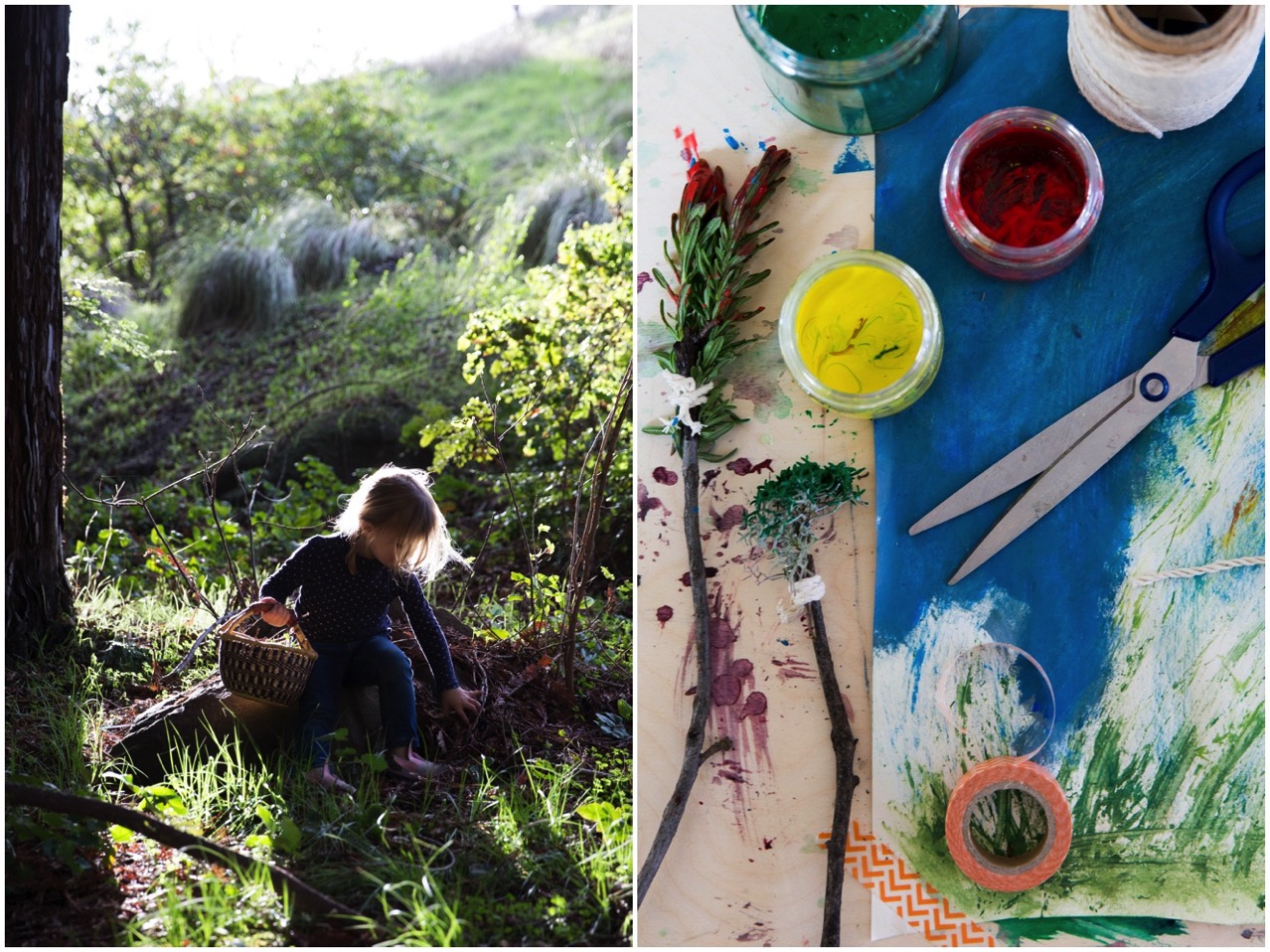
Overall, homeschooling this year has been a joy to me. I love being with my girls and getting to know who they are as they grow. As spring approaches, we are looking forward to a nice break from our hard work! Summer will be all about pool time and new baby snuggling! Then it will be on to a new year of discovery and growing together.
Notes
Unschooling is our main philosophy (more about that here), but we utilize some Charlotte Mason principles to enrich our home and equip our kids to self-educate.
Each year I choose a literature-based curriculum or book list along with one math and one language arts program. From about September to about March, we do short lessons, projects and read alouds with these curriculums. The remainder of our time is spent on interest-led learning. I plan our year without a calendar or planner using a simple homeschool planning schema.
- Here’s how we structure our day, and here’s how we approach learning to read.
- If you liked this post you can find all seven of our homeschool year recaps chronicled here.
- For more homeschool encouragement, ideas and resources, sign up for my newsletter, The Lounge.
PRIMARY RESOURCES USED THIS YEAR:
An assortment of great books from from Sonlight, Ambleside Online, and Beautiful Feet book lists.
For more candid thoughts on faith, motherhood and homeschooling, subscribe to my Substack newsletter!